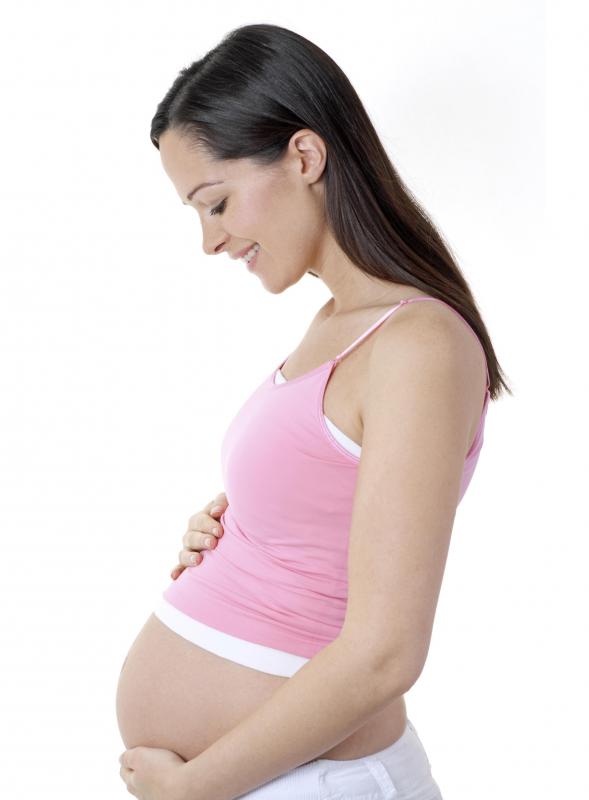At TheHealthBoard, we're committed to delivering accurate, trustworthy information. Our expert-authored content is rigorously fact-checked and sourced from credible authorities. Discover how we uphold the highest standards in providing you with reliable knowledge.
What Are the Different Baby Positions in the Womb?
During pregnancy, a baby will move and lie in various ways inside the womb. It is near the end of the pregnancy when the baby's position becomes a serious matter, as it can affect delivery. There are three types of different baby positions in the womb: cephalic, breech or shoulder. Cephalic, or head-first, presentation includes occiput anterior position and occiput posterior position, while breech, or feet-first, presentation includes frank breech, complete breech and footling breech. Shoulder presentation is also called transverse lie.
Of the different baby positions in the womb, the occiput anterior position is the most common, and ideal, position for delivery. In this position, the baby is head-first and facing his mother’s back. With his head slightly turned to the side and his chin tucked in, the smallest part of his head will be the first part through the birth canal.

Another of the baby positions in the womb in which the baby is head-first is the occiput posterior position. The difference between this position and the occiput anterior position is that here, the baby is facing his mother's abdomen, not her back. The baby, then, is not in the ideal position to get his head through the birth canal as easily. This results in a difficult and prolonged delivery, oftentimes called back labor. While most babies will rotate into the correct position on their own, if there is not room to do so, the doctor might have to manually rotate the baby.

Breech presentations are not favored baby positions in the womb. A frank breech is the most common of breach presentations. The baby’s buttocks are nearest to the birth canal and his legs lie vertically in front of his body so that his feet are next to his head. In a complete breech, the baby's buttocks are nearest the birth canal and his knees are folded so that his feet are next to his buttocks. A footling breach is when the baby’s buttocks are near the birth canal, but one or both of his feet are pointing down and will be the first part through the birth canal.

In most cases, though not all, doctors agree that breech presentations are not ideal for vaginal delivery. If a baby is in a breech position and the doctor cannot rotate him, the doctor will most likely recommend a cesarean delivery. This is because vaginal delivery of a baby in a breech position presents complications and danger to the baby. Since the baby's head will be the last part through the birth canal, interruption of the his blood and oxygen supply can occur.

A transverse lie is the least common of baby positions in the womb during delivery. It usually only occurs with multiple pregnancies or premature delivery. In a transverse lie, the baby is lying sideways, or crosswise. While this position is common during pregnancy, it is not a good position for delivery. The baby's shoulder, hands or feet are nearest to the birth canal, and if the doctor cannot rotate him in time, cesarean delivery might be the best birthing option.
AS FEATURED ON:
AS FEATURED ON:














Discussion Comments
@ysmina-- I'm not a doctor, have you asked your doctor about this.
Thankfully, my baby was in the anterior position during birth, so everything went smooth and I gave birth naturally. But as far as I know, the baby can change his or her position even hours before delivery. Some babies also change their position slightly after labor has started. Like the article said, a doctor can also manually spin a baby in the womb before delivery.
If you have about two weeks and if you deliver on time, the baby might still change into the anterior position. But your doctor is really the best person to ask about this.
I'm only a few weeks away from my due date and found out that the position of my baby in the womb is posterior. I'm very worried. I want to have natural birth and not a c-section. But I heard that posterior birth takes a very long time, it's difficult and painful. I certainly don't want that either.
What are the chances that the baby will turn to the ideal position? Has anyone here experienced something like this before?
For some reason, I thought that a baby is swimming freely inside the womb. Is the baby in these positions only when the baby is very large, when it's close to delivery? Or is the baby always in one of these positions, throughout pregnancy?
Post your comments